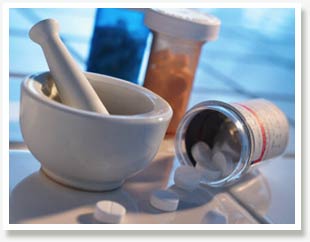Guest Post by Jerilynn Prior, Centre for Menstrual Cycle and Ovulation Research
 As a clinician scientist with expertise in hormones and women’s health, I sit in Canada and look at the hype and dis-sing going on about “bio-identicals” in the USA and shake my head. If we don’t want estrogen that is not FDA approved to be used to treat hot flushes, the simple answer is to regulate appropriately. The perpetual debate about bio-identical hormones has now hit USA Today with a headline: “Bioidenticals: Estrogen without FDA approval for menopause?”
As a clinician scientist with expertise in hormones and women’s health, I sit in Canada and look at the hype and dis-sing going on about “bio-identicals” in the USA and shake my head. If we don’t want estrogen that is not FDA approved to be used to treat hot flushes, the simple answer is to regulate appropriately. The perpetual debate about bio-identical hormones has now hit USA Today with a headline: “Bioidenticals: Estrogen without FDA approval for menopause?”
In Canada, all hormonal preparations require a prescription. Full stop. And the pharmacists who compound estriol or progesterone do so with my prescription for a specific dose and clear purpose. Those compounding pharmacists are also regulated the same way as pharmacists who dispense FDA/Health Canada approved medications. End of story.
What bothers me is that I believe there is an intrinsic advantage to hormones that are molecularly the same as our bodies produce. They are certainly better, a priori than those that are natural for horses or are “similar-but-different.” When oral micronized progesterone (molecularly identical, Prometrium®) is prescribed with estradiol (there are multiple FDA-approved brands of molecularly identical estrogen), there is no increased breast cancer risk.[1] On the other hand, medroxyprogesterone (a similar synthetic derivative of progesterone) with estradiol increases the risk for breast cancer by 79%.[1] That’s called a nasty surprise.
When a hormone treatment is the same as a native hormone we know exactly how it will act, be metabolized, and be excreted. We can learn, if we don’t know, how it interacts with other important factors like age, weight, kidney function, and in relationship to heart disease or breast cancer. So the fact that Wyeth “suggested” that the FDA take compounding and bio-identical hormones to task for false advertising, was simply an effort to regain market share in a legal drug war. They were reeling from the negative results of the Women’s Health Initiative. That’s why they also planned, wrote and published monthly Premarin-positive or estrogen-positive editorials and reviews in house at Wyeth and had them ghost authored by prominent scientists. A turf war.
As a physician, I believe the best treatment for severe vaginal dryness causing repeated bladder infections in older menopausal women is vaginal estriol in a dose of 0.5 mg twice a week.[2] However, there is no FDA/Health Canada approved estriol product. It’s just not available. So, I can prescribe that estriol—the weakest of the three estrogens our bodies make—and a local compounding pharmacist will make it for my patient. And that is a dose and kind of estrogen hormone that doesn’t cause a risk for endometrial (uterine lining) overgrowth or cancer as Premarin cream can (especially if delivered with that ridiculous vaginal applicator and in the doses that are commonly recommended).
What makes me feel both sad and angry is that this bio-identical “tempest in a teapot” (as my grandmother would say) is ignoring the distress of women with severe hot flushes. They are the reason for the popularity of compounded hormones, of the “experts” like Suzanne Somers and those who publicize and back her exuberant and likely imprudent self-medication. I have been cheering since Dr. Leonetti showed that 20 mg twice a day of progesterone cream significantly improved hot flushes.[3] If compounded hormones are evidence-based, as estriol and progesterone cream are for the conditions mentioned, who would fault women for wanting them? Especially when there is sufficient reason to doubt the hormone promises of Big Pharma?
The reality is that all of us—woman, physician, medical journal reviewer, and reporter—are under the spell of “The Estrogen Myth” so that estrogen glitters and progesterone looks dangerous. In reality both work together in every tissue of our bodies. What women need to know is that progesterone (cream and probably Prometriumâ) are effective for hot flushes. And medroxyprogesterone is as effective (by itself!) as Premarin® for treating severe hot flushes in premenopausal women who’ve just had surgical menopause.[4] However, thanks to Big Pharma, Wyeth and “The Estrogen Myth”, that randomized double blind comparative trial took me 12 years to publish (as I wrote in The Estrogen Errors—Why Progesterone is Better for Women’s Health, Praeger-Greenwood, ABC-CLIO Press, Conn., 2009).
Edited Nov 5, 5:47 PM – Dr. Prior adds the following references for the data cited in her post:
- Fournier A, Berrino F, Clavel-Chapelon F. Unequal risks for breast cancer associated with different hormone replacement therapies: results from the E3N cohort study. Breast Cancer Res Treat. 2008;107(1):103-11.
- Raz R, Stamm WE. A controlled trial of intravaginal estriol in postmenopausal women with recurrent urinary tract infections. N Engl J Med 1993;329:753-6.
- Leonetti HB, Longo S, Anasti JN. Transdermal progesterone cream for vasomotor symptoms and postmenopausal bone loss. Obstet Gynecol. 1999;94:225-8.
- Prior JC, Nielsen JD, Hitchcock CL, Williams LA, Vigna YM, Dean CB. Medroxyprogesterone and conjugated oestrogen are equivalent for hot flushes: a 1-year randomized double-blind trial following premenopausal ovariectomy. Clin.Sci.(Lond) 2007;112(10):517-25.


The Safety Of Bio-Identical Hormones by Jeffrey Dach MD
Are Bio-Identical Hormones Safe? When used properly, my opinion is that they are safe. What about the issues of Breast Cancer and Heart Disease?
Let’s take a closer look at the data and make some conclusions…To read more…
https://jeffreydach.com/2008/06/27/the-safety-of-bioidentical-hormones-by-jeffrey-dach-md.aspx
Jeffrey Dach MD
4700 Sheridan Suite T
Hollywood FL 33021
https://www.drdach.com